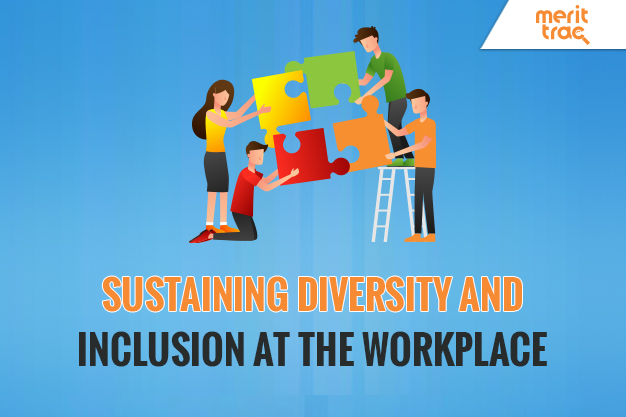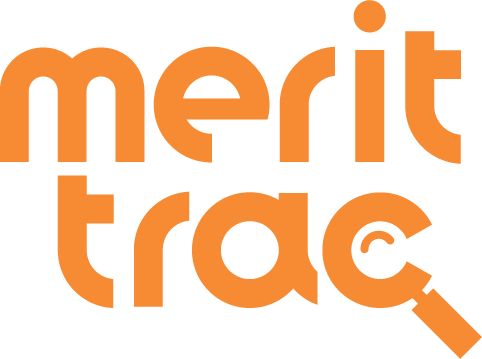
Sustaining Diversity and Inclusion at the Workplace
Date: 15/10/2019 | Posted by: MeritTrac | Category: Corporate , Diversity
Diversity and inclusions (D&I) are increasingly becoming vital indicators of a well-balanced workplace culture and directly impact the organisation’s bottom line. Diversity focuses on welcoming individuals to the workplace from “diverse” backgrounds including different genders, languages, place of birth, personality types, values etc. Inclusion on the other hand refers to a supportive environment where employees feel welcomed as part of the workgroup and decision-making process, irrespective of their background, contributing to a strong organisational bond.
In 2018, The Boston Consulting Group surveyed 1700 companies in 8 different countries across varying industries and company sizes. They found that increasing diversity positively impacts the bottom line by as much as 19%. A more diverse and inclusive team maximizes engagement and leads to better financial performance, creativity, innovation, problem solving, employee retention and enhanced profit and ultimately a positive corporate image.
D&I strategies and plans adopted by organisations
Organisations across the globe have been increasingly adopting D&I plans to create a healthier workplace environment. Though each company is unique in its culture and approach, discussed below are some common strategies that a lot of leading enterprises are consciously adopting to create a more egalitarian work culture.
-
Gender D&I: Organisations have been actively working on diversity metrics and targets in the last decade to rectify the gender skew that exists, particularly in technology and manufacturing intensive sectors. About 77% of companies surveyed in the Workplace 2017 Report now have at least one policy that supports working women. Consider the case of GE, which has set an aspirational target of having 20,000 women in leading STEM roles by 2020 and an absolutely equal 50:50 female/male representation across their entry level technical programs. The strategy comprises of flexible work culture, connectivity and mentoring programs.
-
Differently- abled inclusion: Organisations are developing specific initiatives to welcome differently abled people to their workplace. Valeo, a multinational automotive supplier, employed speech and hearing-impaired people and observed that they were 34% more productive than other employees.
-
LGBTQ+ Community: This is no longer a taboo topic and companies are proactively looking to include employees, irrespective of their gender preferences. A drive within Accenture includes insurance coverage for gender affirmation surgery in certain countries and a global Ally program with more than 110,000 members.
-
Minority Inclusion: The Intel annual report 2018 reveals that hiring 10% Hispanics has increased growth by 38.9% and a 11.2 % growth in the hire of African- American employees contributed to whooping growth of 160.5 %. Intel has special hire drives in place for underrepresented minorities.
-
Diverse Supplier inclusion: At Intel again, D&I extends to diverse owned businesses in their global communities. The intent is to generate a more innovative supply chain and create more opportunities for diverse business to thrive.
D&I – much more than a laundry list of labels
Acknowledging D&I as a priority and introducing initiatives in this area is just the beginning. In order to prevent D&I from becoming a mere check in the box, organisations must come up with a detailed strategy that calls for consistent action and evaluation standards to measure success. Discussed below are a few measures and suggestions.
-
Make D&I a business priority – D&I is not just about visibility. For D&I to sustain, it must be made a top-level business priority with leadership buy in and targets set across divisions and departments with accountability mapped like any other KRA.
-
Clear & transparent hiring goals – A good starting point to address D&I is at the very beginning, by bridging gaps in hiring. Recruiters need to focus on attracting skills from diverse pools and people from different backgrounds by setting transparent goals that are communicated clearly, both within the organisation and externally.
-
Providing regular employee education and trainings- It is important to train, ask questions, involve people, and re-train periodically, in order to be truly inclusive. LinkedIn provides monetary compensation to staff who dedicate time to increasing D&I. Frequent sessions with HR partners and specialist trainers to address inclusivity measures and tackle conscious and unconscious biases prevalent at workplace must be mandatory.
-
Foster empathetic leadership and transparent discussions – Visible role models who walk the talk on D&I will go a long way in influencing overall workplace culture. Leaders who are committed to D&I impact the team positively with their empathy, listening and transparent discussions on workplace issues and how the organisation can be made truly inclusive.
References












 Sales Hotline: USA: +1 646 916 0939 / Others: +91 80619 14700
Sales Hotline: USA: +1 646 916 0939 / Others: +91 80619 14700


